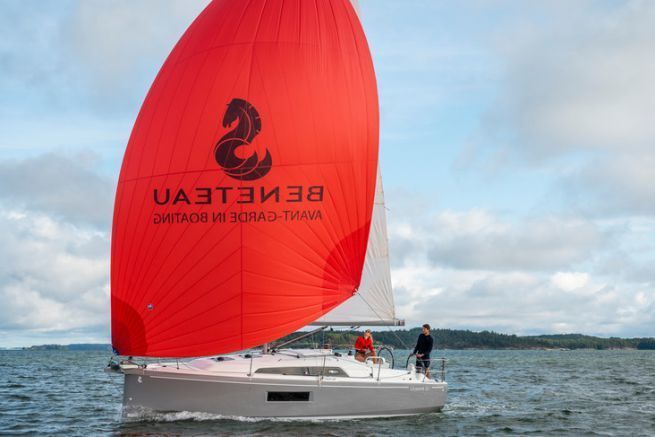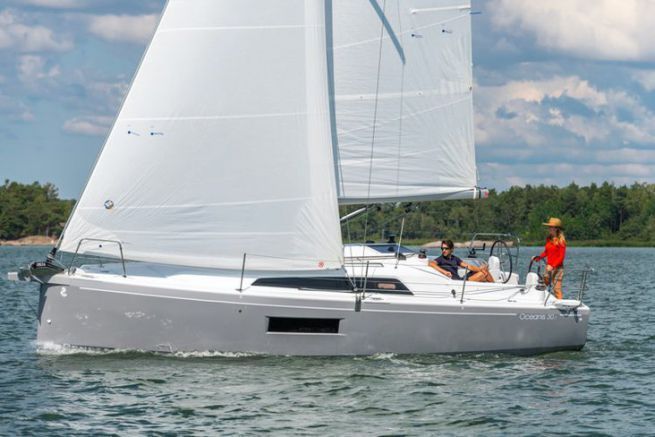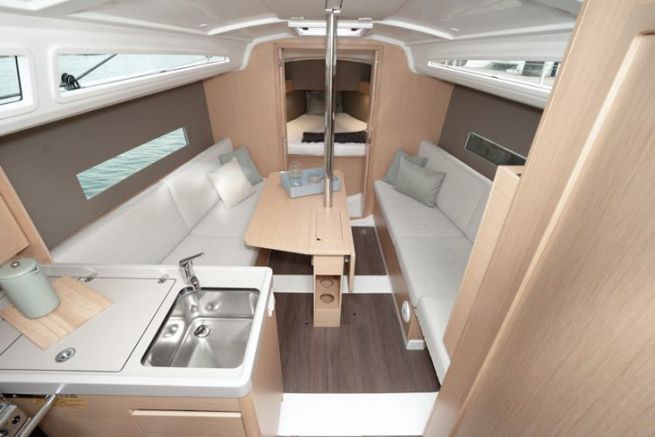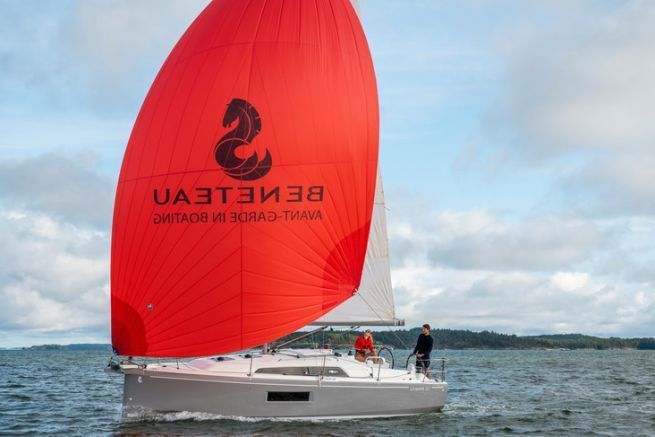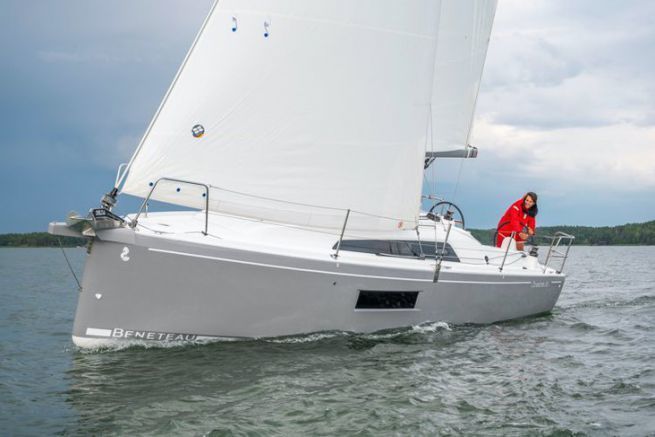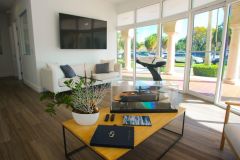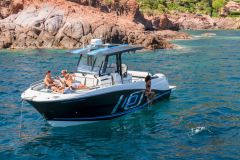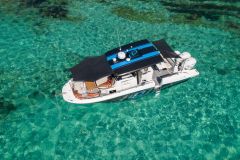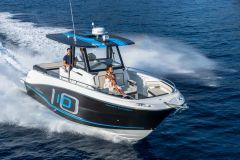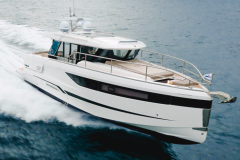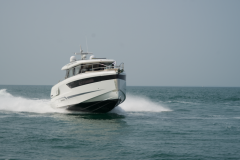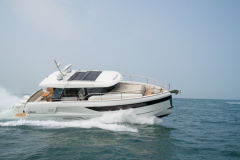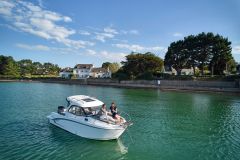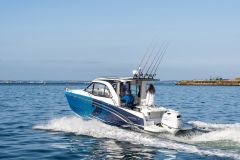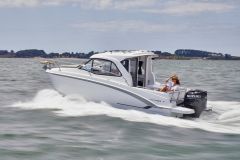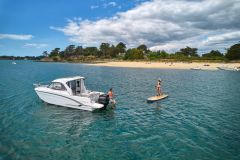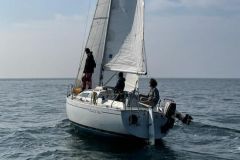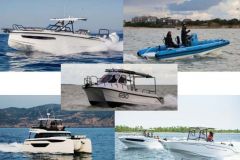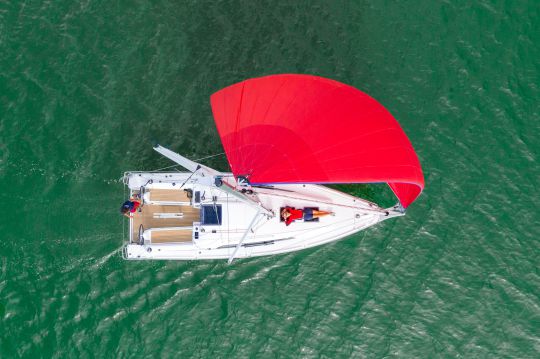
A limited beam does not only have disadvantages, starting with the reduced wetted surface. Thinking about all these large hulls that tend to stick, it makes us smile when we leave the harbor where, decidedly, Éole shows a certain laziness to get up. However, on the test model, we have a large asymmetrical spinnaker and above all a gennaker mounted on a furler. This sail is magical in light airs and allows you to glide over the water at fairly tight speeds, creating apparent wind.
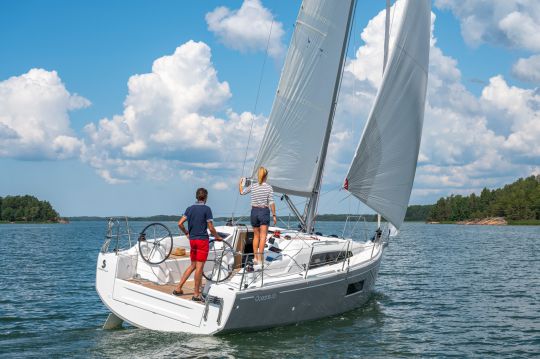
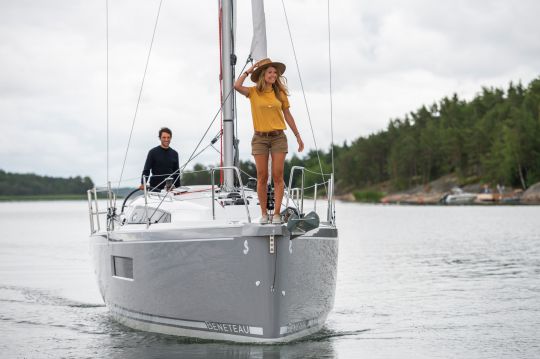
A simple deck plan
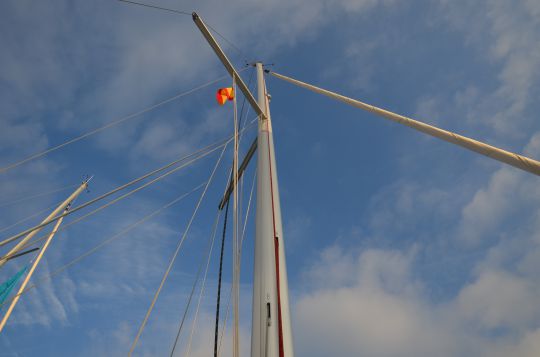
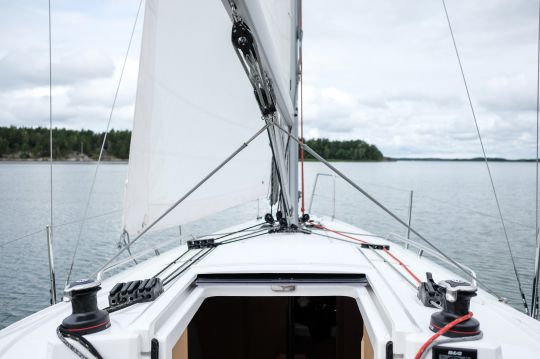
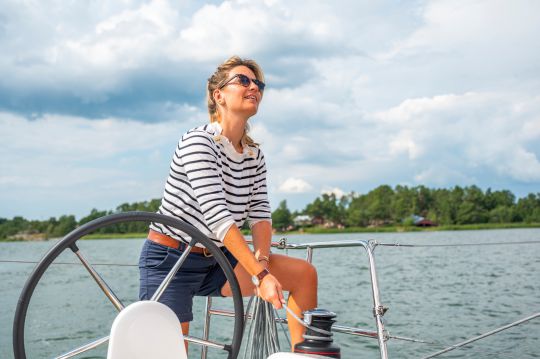
The split rig with very strong spreaders eliminates the need for a backstay and simplifies maneuvering, as does the self-tacking solent track and the goose foot on the mainsheet. Ergonomics are very good and by choosing the steering wheel, as on the version we tested, you will have natural access to the sheet adjustment while steering. The rest of the cockpit is free for relaxation, but the B&G instrument console placed on the roof, too far from the helmsman in this configuration, is rather made for the tiller version. The gennaker or the asymmetric spinnaker is moored on a delphinière which also supports the anchor roller. The whole thing is simple and maneuvering solo is not a problem.
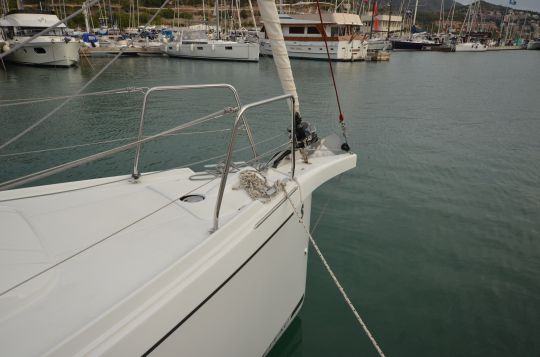

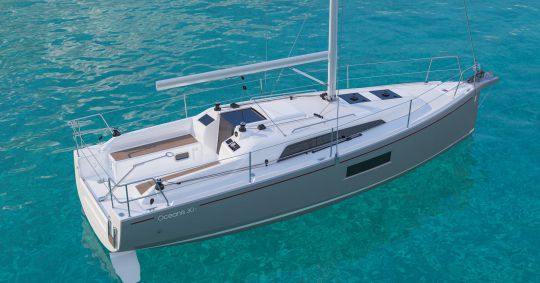
Good sensitivity to the bar
The bars placed just above the rudders are very direct and telling. Rigged with the gennaker, our long ballast version is wafting in the Catalan scent. We reach the wind speed without too much difficulty, even slightly exceeding it, 4 knots without trying to make too much course. We feel that the potential of the boat to make a good speed in the breeze is real. The control is still very easy. We are sending the asymmetrical to come back and there is no doubt that the downwind in the breeze will be a formality with the double rudders well angled.
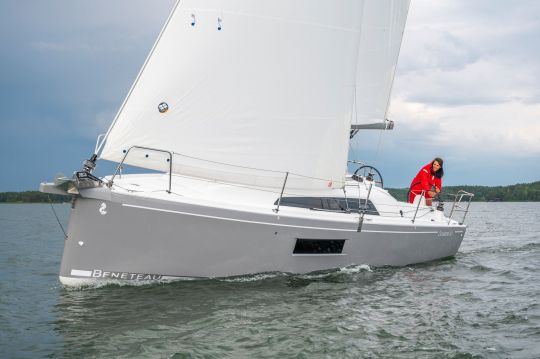

Large engine option for the sea
Two Yanmar engines are available with 14 and 21 hp. Only the more powerful one is approved for the sea, the other one being reserved for inland waterways. This makes the option compulsory if you want to leave the canals. The 130-liter tank is sufficient for a good autonomy, with an average consumption of 4 to 6 liters/hour.
